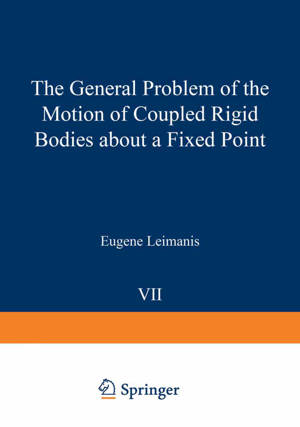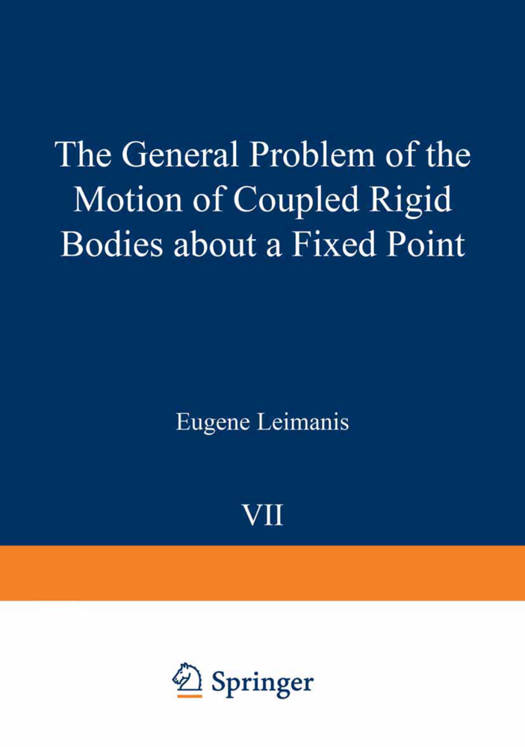
- Afhalen na 1 uur in een winkel met voorraad
- Gratis thuislevering in België vanaf € 30
- Ruim aanbod met 7 miljoen producten
- Afhalen na 1 uur in een winkel met voorraad
- Gratis thuislevering in België vanaf € 30
- Ruim aanbod met 7 miljoen producten
Zoeken
The General Problem of the Motion of Coupled Rigid Bodies about a Fixed Point
Eugene Leimanis
€ 167,95
+ 335 punten
Omschrijving
In the theory of motion of several coupled rigid bodies about a fixed point one can distinguish three basic ramifications. 1. The first, the so-called classical direction of investigations, is concerned with particular cases of integrability ot the equations of motion of a single rigid body about a fixed point,1 and with their geo- metrical interpretation. This path of thought was predominant until the beginning of the 20th century and its most illustrious represen- tatives are L. EULER (1707-1783), J L. LAGRANGE (1736-1813), L. POINSOT (1777-1859), S. V. KOVALEVSKAYA (1850-1891), and others. Chapter I of the present monograph intends to reflect this branch of investigations. For collateral reading on the general questions dealt with in this chapter the reader is referred to the following textbooks and reports: A. DOMOGAROV [1J, F. KLEIN and A. SOMMERFELD [11, 1, 1 J, A. G. 2 3 GREENHILL [10J, A. GRAY [1J, R. GRAMMEL [4 J, E. J. ROUTH [21' 2, 1 2 31' 32J, J. B. SCARBOROUGH [1J, and V. V. GOLUBEV [1, 2J.
Specificaties
Betrokkenen
- Auteur(s):
- Uitgeverij:
Inhoud
- Aantal bladzijden:
- 338
- Taal:
- Engels
- Reeks:
- Reeksnummer:
- nr. 7
Eigenschappen
- Productcode (EAN):
- 9783642884146
- Verschijningsdatum:
- 1/06/2012
- Uitvoering:
- Paperback
- Formaat:
- Trade paperback (VS)
- Afmetingen:
- 178 mm x 254 mm
- Gewicht:
- 616 g

Alleen bij Standaard Boekhandel
+ 335 punten op je klantenkaart van Standaard Boekhandel
Beoordelingen
We publiceren alleen reviews die voldoen aan de voorwaarden voor reviews. Bekijk onze voorwaarden voor reviews.








